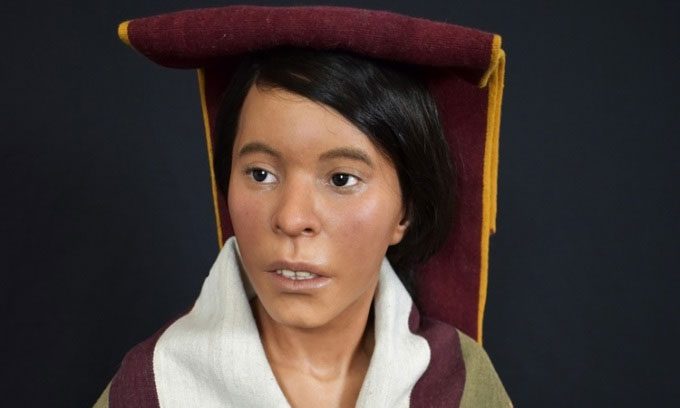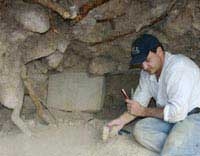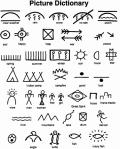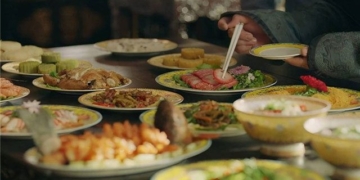The naturally mummified face of the Ice Maiden of Ampato, a victim of sacrifice traditions, has been meticulously reconstructed.
Over 500 years ago, a 14-year-old girl was taken to the Andes Mountains and sacrificed to the Inca gods. Buried on the mountain alongside various offerings, her body became a natural mummy over time, preserving her hair, fingernails, and the colorful cords she wore on her last day. However, at various points throughout the centuries, her face was exposed to weather elements such as sunlight and snow, which caused many of her features to gradually erode, according to National Geographic.

Reconstructed face of the Ice Maiden. (Photo: Oscar Nilsson).
Now, the damaged face of this Inca girl has been restored through archaeological analysis and forensic reconstruction. The stunning 3D bust of the girl, nicknamed The Ice Maiden of Ampato, is the centerpiece of a new exhibition in Peru, aimed at exploring the tragic practice of live human sacrifice that occurred in the Andes mountains half a millennium ago.
When National Geographic explorer Johan Reinhard discovered the mummy, also known as Juanita, at the summit of Mount Ampato, which stands at 6,400 meters high in the Andes, during an expedition in 1995, he realized he had stumbled upon something extraordinary. Reinhard recalls that initially the mummy appeared to be a large bundle of rags, but then he noticed the face peeking through the layers of fabric. This was the young victim of the Inca practice known as capacocha.
Capacocha primarily involved the sacrifice of children and animals to the gods in response to natural disasters, to reinforce the power of the ruling class in remote provinces of the Inca Empire, or simply to appease the deities. The practice of sacrifice played a crucial role in maintaining the Inca Empire, featuring elaborate feasts and processions escorting the chosen child for their beauty and perfect physique. Being selected for sacrifice was a great honor for the child’s family and community. The methods of sacrifice varied depending on the deity being worshipped. Some children were buried alive or strangled, while others had their hearts cut out. The life of the Ice Maiden ended with a blow to the back of the skull with a blunt object.
Restoration expert Oscar Nilsson is very familiar with that skull. He spent months working on its replica in his studio in Stockholm, ultimately creating a lifelike sculpture of the 14-year-old girl when viewed from a distance. According to the Swedish archaeologist and sculptor, it was a two-step process. First, Nilsson immersed himself in the world of his subject with the detailed gaze of an archaeologist, gathering as much data as possible to understand what the girl might have looked like. Despite the damage to the mummy’s face, he could infer the thickness of the muscle tissue surrounding the bones, relying on CT scans, DNA analysis, dietary information, and details about diseases to visualize the subject’s face.
Next, Nilsson printed a 3D replica of the Ice Maiden’s skull, using wooden clamps to mark tissue thickness and sculpting muscle bundles with polymer clay. He then worked on features such as the eyes, nose, and cheeks. After creating a silicone mold for the chest area, Nilsson added hundreds of strands of hair. The entire process took 10 weeks. The portrait of the Ice Maiden is displayed alongside her mummy at the Santuarios Andinos Museum in Arequipa, Peru, until November 18.





















































